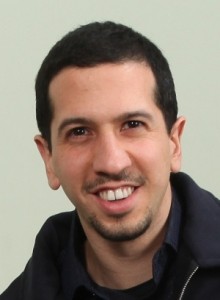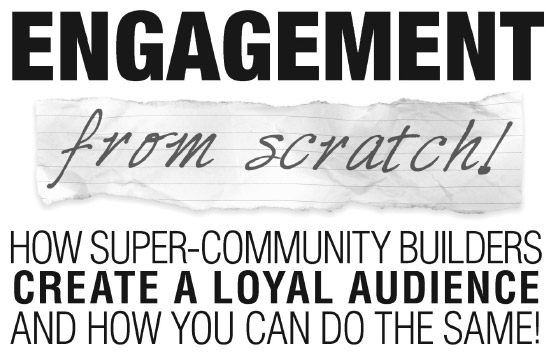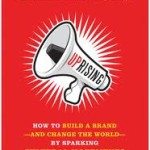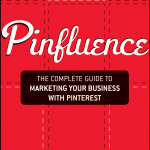 Danny Iny, co-founder of Firepole Marketing, has put together a fabulous new book called “Engagement from Scratch: How Super-Community Builders Create a Loyal Audience and How You Can Do the Same!“ Contributors to his book include folks like Brian Clark of Copyblogger; Anita Campbell of BizSugar; Guy Kawasaki and a whole slew of other greats. Listen to the full interview on BlogTalkRadio.
Danny Iny, co-founder of Firepole Marketing, has put together a fabulous new book called “Engagement from Scratch: How Super-Community Builders Create a Loyal Audience and How You Can Do the Same!“ Contributors to his book include folks like Brian Clark of Copyblogger; Anita Campbell of BizSugar; Guy Kawasaki and a whole slew of other greats. Listen to the full interview on BlogTalkRadio.
TS: I’ve been following Firepole Marketing for nearly a year, and it’s been exciting to watch you emerge so quickly. It seems like you did it faster than most. What made you decide to put this book together?
DI: Our blog went live in the Fall of 2010 but we really didn’t do anything with it until early 2011. We started working on it — building and experimenting with what works and what doesn’t — and did quite a lot of research. We were figuring out what to do as we went along and learning from the examples of a lot of great people. I started to get frustrated at with the stuff that’s out there in terms of how to engage your audience. It all kind of assumes that you’ve already got one. Things like “Here’s how to engage your followers and fans.” If your audience consists of your girlfriend and your cat, that stuff isn’t going to work.
TS: You and I both have been in marketing for quite a long time, but I think the both of us are on the newer side in terms of online marketing. I started this website in May of 2011 (rebranded from Social Good Consulting) with the purpose to build a business that would allow me to work from anywhere in the world. Prior to that, I did most of my marketing the traditional way — in person and via direct mail. Of course, I learned very quickly how to utilize online tactics like email and social media, but my own marketing efforts previously focused more on local as opposed to global. It was a big shift for me to move into building an audience online. Was that an impetus for you and this project?
DI: Yes. I felt there was a need to address that challenge of building and audience from scratch. As I started to get a handle on it and my audience started to grow, I felt I could address that need. My first thought was that I could do this myself. When I sat down to write an ebook or an informational package, I found that I couldn’t really write it. I had my best practices that were working for me, but as I looked around at others who were seeing success, I saw that they were doing other things, contradictory things. They were succeeding so clearly their practices worked. It was one of those things where there is no one right answer. The only way that this could really be addressed was by getting a breadth of perspective from many voices. I thought that to a certain extent I knew what would go into the book. I asked these brilliant people to contribute and I really thought I had a sense of what they would come back with. But in a lot of cases I was very surprised. I learned so much just from putting this book together than I thought I would.
TS: What would you say was the biggest surprise for you?
DI: You mentioned a little while ago the difference between marketing online and offline. That difference trips people up. It’s very counter intuitive. On the one hand, if you’re marketing online you’re accessing the world. You can supposedly reach anybody. When you’re marketing locally in your community, you have the ability to walk up to people and actually say hello. The paradox is that when you’re first online, you’re publishing your blog and nobody’s reading it. Where are all these millions of people that are purportedly online? Where are they? How do I find them? So the biggest surprise for me about this book is how many different ways of getting around that challenge there really are.
TS: I enjoyed the book for two reasons: 1) I learned a few new things, which I always love; and 2) Because it was like reading mini-autobiographies of some of my favorite online leaders. You’ve got Brian Clark and Guy Kawasaki and so on — and it was like getting a peak into their thought processes and what life was like for them when they started. In terms of all of these fabulous people who contributed, which story did you enjoy most?
DI: There were several. To be honest, it would be difficult to choose just one. Something that I found cool in putting this together is the diversity in voices. I have the ones I like more and the ones I like less. And the ones I like less are very few and far between. But some of those are the ones that other readers like most. And that’s what’s great about this book. There’s something in here for everyone. It speaks to our differences in taste. For me, I like the high level insights. I like the Why and What’s-behind-it. One of the essays I connected with most was Randy Komisar’s (KPCB.com). He’s been a hero of mine for a long time. The guy is amazing. I also liked the essay by Stuart Mills of Unlock the Door. Very insightful. Also Steve Kamb’s (NerdFitness.com) and Tristan Higbee’s (theBackLight.com) were fabulous. The thing these essays all had in common was they talked conceptually about how you should think about creating engagement. What’s the right frame of mind to approach this? The ones I tended to like less were those that were more tactical and outlined step by step how you do it. But that’s what a lot of people are looking for, too.
TS: I totally relate to that! Many people would rather be told what to do rather than play around with it and come up with their own recipe for how to get it done. And it’s something I struggle with a lot as a marketing consultant. My manifesto talks about being a Chef, not a cook. Which is a riff off of something that Seth Godin talks about in his book, Linchpin. I don’t want to give my clients a recipe for doing their marketing, I want to help them see what the ingredients are and how they interact with each other so they can choose their own right mix of how to put it together. But those recipes can be helpful too because they show you, “this is how I did it.”
DI: They’re helpful and they’re very important. Theory and strategy are all well and good, but what gets you there is the implementation. I really like the analogy that you used — that it’s a lot like cooking. There are tons of experts out there touting their “blueprints” or “roadmaps” and those imply that there are certain steps you can take that if you follow, you’ll get exactly the same results. Business is more complex than that. It’s a lot like cooking. You’ve got the different ingredients and you can mix them together in different quantities and use different timing and get totally different results. That’s why you need to understand strategy…and I should really stay away from cooking metaphors.
TS: (Laughs) Yes, it’s understanding the underlying Why! Why would you cook a souffle as opposed to an omelet? There are many ways to put eggs together. Definitely if you’re cooking them at a different altitude, your results will differ too. And you’ve got to understand the underlying chemistry of how things interact under certain circumstances before you can create something delicious. All the variables that go into cooking are there in marketing a business. Unfortunately, we’d all like a blueprint or a roadmap so we can get on with the business of doing what we do well (which usually isn’t the marketing). Some of my clients would rather have me tell them what to do so they can focus on what they love. On another note…in terms of how you put this book together, how long did it take and what did you learn?
DI: The first thing I learned is that I should give myself more time on the projects. My partner and I first started talking about this idea in late May and the book was published in November. I got married in the middle of that, too. That probably wasn’t the smartest approach.
TS: And then there was the whole “Freddy Krueger of guest blogging,” too. How did you fit all of that in?
DI: There are two expressions. It’s a combination of Parkinson’s Law and the Bugs Bunny Effect. Parkinson’s Law says that tasks will expand to fill the time you allot them. So if you give yourself less time, you’ll manage to cram it all in. With regard to the Bugs Bunny Effect — you know how the cartoon character runs off the cliff and doesn’t fall until they look down? The lesson there is just never look down. Gravity only kicks in if you look down.
TS: Obviously you didn’t fall and crash, so it must’ve worked, right?
DI: It works! As long as you give yourself some time to recharge every so often, it works. I think a lot of people don’t achieve as much as they could because they set limits on what they think is possible. Which is very unfortunate. A lot of people could be doing a lot more. And accountability helps! You know, if I had just been writing this book myself, the deadline would’ve slipped. But if Guy Kawasaki, Brian Clark and all these wonderful people agree to contribute to this book and I told them it would be published at the end of 2011, then I’m gonna damn well get it done.
TS: How long do you think you should’ve taken?
DI: What I would’ve liked is to not to have had to manage the whole thing. This book was self published so I spent a lot of time interacting with the contributors and working on the typesetting and the marketing and writing the guest posts. What I would do next time is wait to put the marketing timeline together after the book is ready. So that would mean another two to three months. Nine months to a year would be ideal. I didn’t anticipate how much work would be involved in collecting and assembling the content. From the guidance you give your contributors, in terms of reading their material and asking for more, proofreading, and so on. It’s a lot more than taking just a collection of articles and pasting them back to back. I have a full time assistant and Megan is the one who really helped me get it all done.
TS: How did you get CC Chapman (the author of Content Rules) to write the forward?
DI: I interviewed CC Chapman on Firepole Marketing at the beginning of the year and I remember feeling so much more energized after our interview than I had felt going in. That’s was the kind of the energy I wanted to bring to this book. And he graciously agreed to help.
TS: What’s the next book project?
DI: The next book I’m publishing is going to be released in just a few weeks and it was co-authored with Sean Platt. The topic is how to build a blog and it dovetails nicely with Engagement from Scratch. I’m proud of it. The next book after that will hopefully be published at the end of the year. It’s in the early stages and I can’t say too much about it, but once it’s released it’s going to be THE book about marketing.
TS: Let’s give folks the 411 on where they can get your book.
DI: Anyone who wants the book — either in paperback or on Kindle — can get it on Amazon.com. But if you just want the content, you can download the book for free at EngagementFromScratch.com.
TS: That’s very generous. And when people buy the book, you’re donating some profits as well, right?
DI: Yes, 50% of the profits go to Network for Teaching Entrepreneurship. Being a largely self-taught entrepreneur, it’s something I really care about. Being an entrepreneur is a very high risk enterprise and it’s the cornerstone of the world economy. We don’t educate our entrepreneurs like we should.











Oh, thank you for this. This is exactly the problem I’m facing. All the marketing advice tells you what to do with your existing audience. I can’t find anything that tells you what to do if literally no one has heard of you yet.